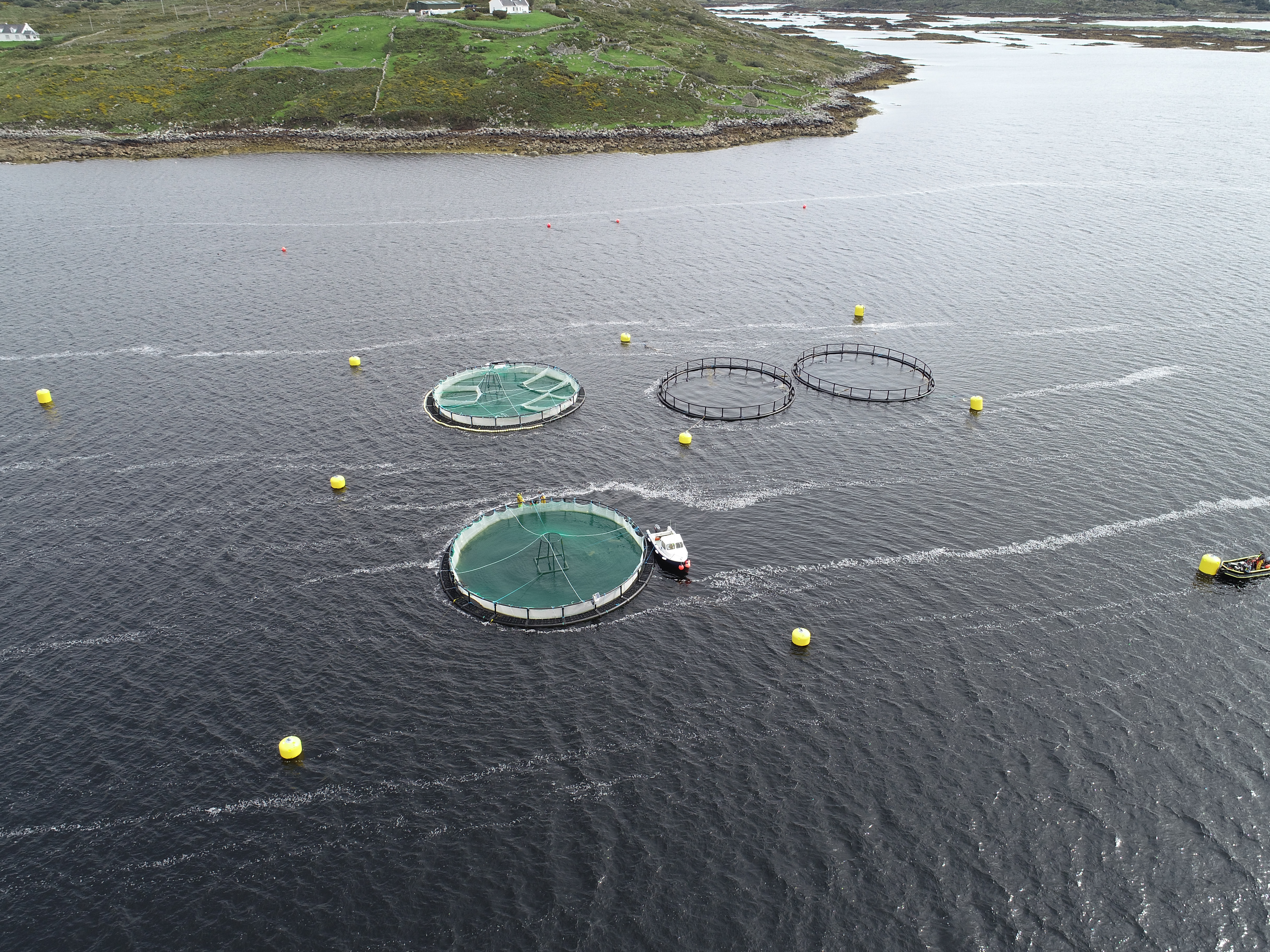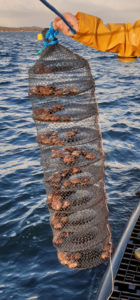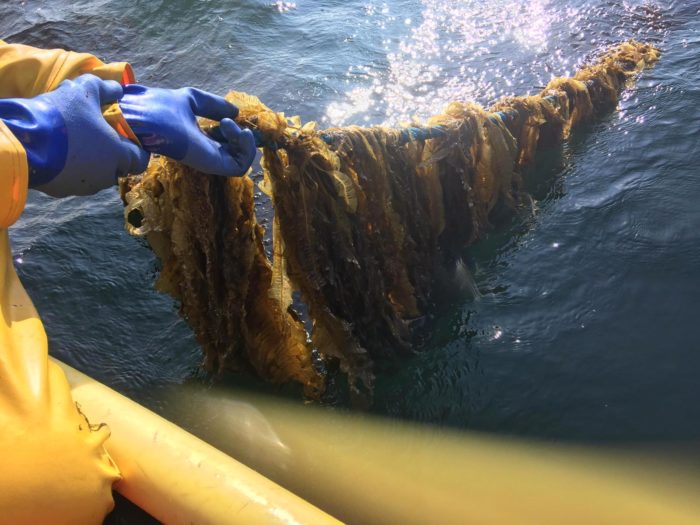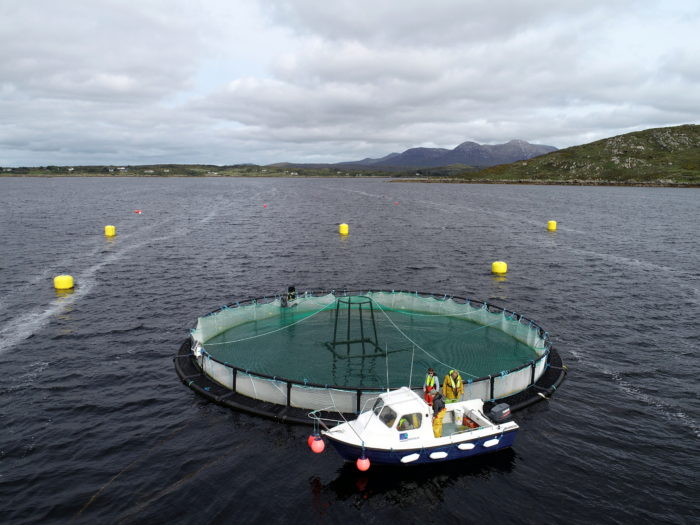Key points about this IMTA site in Ireland
- Name of the site: Lehanagh Pool
- Location: Connemara, Co. Galway, Ireland
- Type of aquaculture production: Coastal aquaculture
- Provided by: Marine Institute
Take a look at some pics from the site!

Interview:
- Interviewee: Joanne Casserly, Scientific and technical officer at Marine Institute
- About the coastal aquaculture research site located in Lehanagh Pool, Connemara in Galway, could you tell us a bit about this pilot in terms of size, scale and production?
- JC: The Marine Institute operates a coastal research site in Cashel in Connemara, in Bertraghboy Bay, known as Lehanagh Pool. The site is Ireland’s only licensed multi-species marine research site in Ireland. The site is 23 hectares in size. The site forms part of a national aquaculture research cluster and is an important part of the States marine research infrastructure.
The site is Ireland’s only licensed multi-species marine research site in Ireland. The site is 23 hectares in size.
- Why was this site chose to be a pilot for the IMPAQT project?
- JC: The IMPAQT project offers exciting opportunities to progress the use of technology in aquaculture and to validate the concept of IMTA. IMTA is somewhat in it’s infancy, particularly from use in a commercial setting, and the marine research site offers a facility where we can trial the IMPAQT system, in a controlled environment, with an industry research focus.
- What are the current practices that relate to Integrated Multi-Trophic Aquaculture? Could you describe for us the ecosystem living in this site?
- JC: The site is tailored to have multiple species from different trophic levels operating synergistically, and to mimic the natural ecosystem where different animals and plants/seaweed benefit from growing in proximity to each other. Currently on site we have different types of algae growing – primarily large kelp species – we have juvenile European lobster – a novel species for IMTA – alongside scallop and different types of fish – Atlantic Salmon, Ballan Wrasse and Lumpfish. The fish are fed species, fed using organically sourced feed, the lobster uptake the particulate organic waste and the seaweed uptakes the dissolved matter from the water column. This approach maximises the use of space by providing more produce within the same area, whilst mitigating environmental impacts through bio-remediation.

The site is tailored to have multiple species from different trophic levels operating synergistically, and to mimic the natural ecosystem where different animals and plants/seaweed benefit from growing in proximity to each other.
- What are the expected benefits from IMPAQT for this site?
- JC: As a research institute we are keen to assist with the validation of the concept of IMTA and to promote the diversification of aquaculture species and practises. It is recognised that IMTA will enable more efficient aquaculture practice and we are keen to demonstrate this within the IMPAQT project. We hope to demonstrate optimal site and spatial configuration for various IMTA component and to assess impacts and interactions at a site and an ecosystem scale, as well as allowing near real time assessment of stock and environmental status facilitating timely responses to challenges. Current IMTA systems tend to be simple three-component designs, but future options could include more advanced multi-component systems (various seaweeds at different times of year, deposit feeders, grazers, bottom dwelling worms, crustaceans, etc.) and the IMPAQT project can help understand the dynamics of these more complex systems. IMPAQT will also help with demonstrating the economic value of the bio-mitigation services provided and help inform regulators and encourage investment. The validation of IMTA will also help inform consumers about the benefits of IMTA products.
We hope to demonstrate optimal site and spatial configuration for various IMTA component and to assess impacts and interactions at a site and an ecosystem scale, as well as allowing near real time assessment of stock and environmental status facilitating timely responses to challenges.
- Since the beginning of the project in May 2018, have you already identified some of the IMPAQT benefits?
- JC: The major work on the project to date has been design and planning of the IMPAQT platform and the Integrated Management System, along with identifying the needs of the farmers from such a system. We have been planning and since the project began we have started to identify areas where we hope to develop methods and technologies to benefit fish health and welfare, to minimise environmental impacts and to develop time and cost saving practices.

- What are the required parameters to be monitored in site/tests to be held for IMPAQT?
- There are a large number of parameters being monitored. We are assessing everything from water quality to weather, operating practices to fish feeding and fish behaviour! An IMTA system is a complex interaction of components and it is important for the operator to have a good understanding of these to manage the system effectively and efficiently. It will be very interesting to identify correlations and interactions between the different parameters and to work through the data collected to help to grow sustainable aquaculture.
We are assessing everything from water quality to weather, operating practices to fish feeding and fish behaviour!
- Have you identified some replicabilities/lessons learned from this site to others?
- We aim to make any innovations developed replicable for other aquaculture facilities and to ensure the dissemination of lessons learned directly to the industry and end users.







